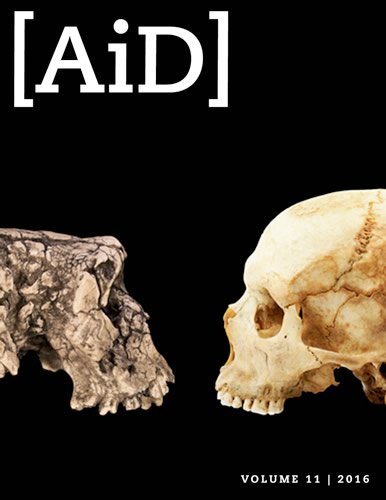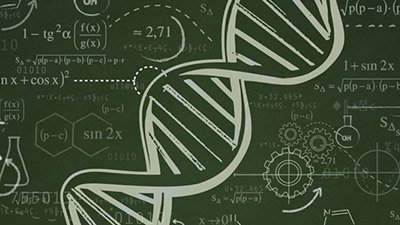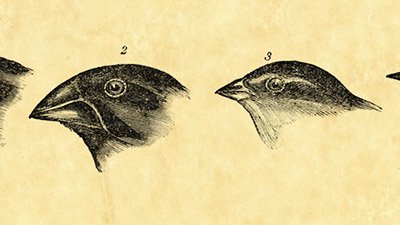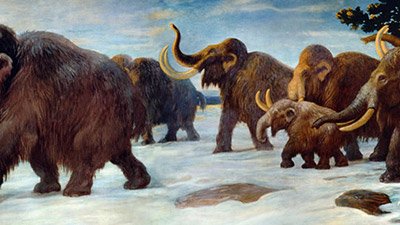2016 Volume 11

Answers in Depth (AiD) explores the biblical worldview in addressing modern scientific research, history, current events, popular media, theology, and much more. AiD provides Christians with powerful apologetic answers, careful critiques, and close examinations of the world around them.
Contents
-
In-Depth ArticleWhat Does It Mean to Be Human?Jan. 1, 2016
Is being human just a matter of accumulating qualities that humans have, even if evolutionists could find a way that ape-like creatures could have done so?
-
In-Depth ArticleDo Proteins in Dinosaur Blood Vessels Map Evolutionary History?Jan. 9, 2016
Scientists believe protein sequences from dinosaur blood vessel walls may help them map evolutionary relationships.
-
In-Depth Article12 Days of Evolutionary DeceptionJan. 14, 2016
“The 12 Days of Evolution”—a PBS-sponsored video series—deceptively makes Darwinian evolution appear obvious and undeniable.
-
In-Depth ArticleDoes the Diversity of Eyes in Nature Support Evolution?Jan. 28, 2016
The National Geographic article treats every aspect of our world of vision as evidence for evolution: eye diversity and the fact that eyes share common designs.
-
In-Depth ArticlePinpointing the “Accident” That Let Multicellular Life EvolveFeb. 11, 2016
If a computer simulation can trace a path for the evolution of multicellular organisms from single-celled ones, does that mean they actually evolved that way?
-
In-Depth ArticleIs Your Allergy-Prone Immune System the Result of Neanderthal Influence?Feb. 18, 2016
Three of the genes that control our immune system's first line of defense (and our allergies) bear a significant footprint from Neanderthals.
-
In-Depth ArticleDo Deep-Sea “Purple Socks” Hold Early Evolutionary Secrets?Feb. 25, 2016
Analysis of newly discovered deep-sea species led evolutionists to say that Xenoturbella, resembling a discarded purple sock, can help us understand evolution.
-
In-Depth ArticleHow Did Plate Tectonics Get Started on Earth?March 2, 2016
Secular geologists are puzzled by how plate tectonics got started if early earth’s surface was covered by a layer of crust that kept the surface motionless.
-
In-Depth ArticleThe Gorilla-Human “Split”: Where Do Gorillas Hang on Our Family Tree?March 10, 2016
Researchers believe the 8-million-year age assigned to some gorilla teeth pushes back the time for the divergence of gorillas from the line that led to humans.
-
In-Depth ArticleRed Wolf Species Classification Affirms Biblical Creation, Puzzles EvolutionistsMarch 14, 2016
As researchers sequence the DNA of more organisms, they find species (like the red wolf) they called unique physically are not so unique genetically.
-
In-Depth ArticleAre “Vestigial Organs” Really “Proof of Evolution . . . on Your Body”?March 31, 2016
Can YouTube video “Proof of Evolution That You Can Find on Your Body” prop up the human evolutionary story through our presumably useless body parts?
-
In-Depth ArticleWinding Back Life’s Story: Evolution of MitochondriaApril 7, 2016
Evolutionists claim to know when mitochondria evolved yet still cannot show how or that mitochondria are anything but one of God’s great designs.
-
In-Depth ArticleLizards Trapped in Amber Said to Show Evolutionary LinksApril 14, 2016
Scientists believe resin froze these lizards in time 99 million years ago, and the resin’s subsequent transformation into amber saved them for us to see.
-
In-Depth ArticleHow Are New Genes Made?April 21, 2016
Evolutionists conclude “the birth of new genes is an important motor of evolutionary innovation,” but how are new genes made?
-
In-Depth ArticleCan Scientists Rewind Supposed Evolution of Dinosaurs to Birds?April 28, 2016
Evolutionary scientists think birds evolved from dinosaurs and to help prove it, they’ve engineered a chicken embryo to grow a dinosaur-like lower leg.
-
In-Depth ArticleIs Genesis 1 Literal, Literalism, or Literalistic?May 2, 2016
When we read Genesis 1 in its context, it should be understood as a historical account which teaches that God created everything in six 24-hour days.
-
In-Depth ArticleHave Evolutionists Found the Root of REM Sleep?May 19, 2016
Does the discovery that sleeping dragons as well as mammals and birds experience REM sleep support the evolutionary story of their common ancestry with humans?
-
In-Depth ArticleEukaryote Without Mitochondria Is Not a Product of EvolutionJune 2, 2016
Named Monocercomonoides, this eukaryotic microorganism doesn’t have the slightest trace of mitochondria. How does it survive?
-
In-Depth ArticleBuilding Project in Bruniquel Cave Reveals Neanderthals’ Modern-Human AbilityJune 9, 2016
Discovery of man-made structures deep in a cave has shown that Neanderthals could do a lot more than most folks have given them credit for.
-
In-Depth ArticleChiral Molecule in Interstellar Cloud Said to Shed Light on Life’s OriginsJune 30, 2016
Evolutionists hope the first chiral molecule discovered in interstellar space will shed light on the mystery of how life evolved its biochemical handedness.
-
In-Depth ArticleHobbits of Flores Were an Archaic Human Variety, Studies SuggestJuly 15, 2016
Could hobbits be a dwarfed variety of Homo erectus, an archaic human whose presence in Southeast Asia, specifically Flores, has been demonstrated?
-
In-Depth ArticleDo Walking and Waterfall-Climbing Fish or the Sonic Hedgehog Gene Reveal How Life on Land Evolved?Aug. 10, 2016
Walking fish, waterfall-climbing cavefish with a tetrapod-like pelvic girdle, and the gene that shapes skates’ gills all supposedly show how legs evolved.
-
In-Depth ArticleThe Design of the Mosquito and Its DangersAug. 11, 2016
If everything that God made was good, where did disease-causing mosquitoes come from? What is the origin of mosquito-borne diseases?
-
In-Depth ArticleJust How Random Are Mutations?Aug. 18, 2016
Changes to the sequence of nucleotides (e.g., mutations) can alter the genetic information of the organism, which, in turn can alter its physical features

Answers in Genesis is an apologetics ministry, dedicated to helping Christians defend their faith and proclaim the good news of Jesus Christ.
- Customer Service 800.778.3390
- © 2024 Answers in Genesis



























